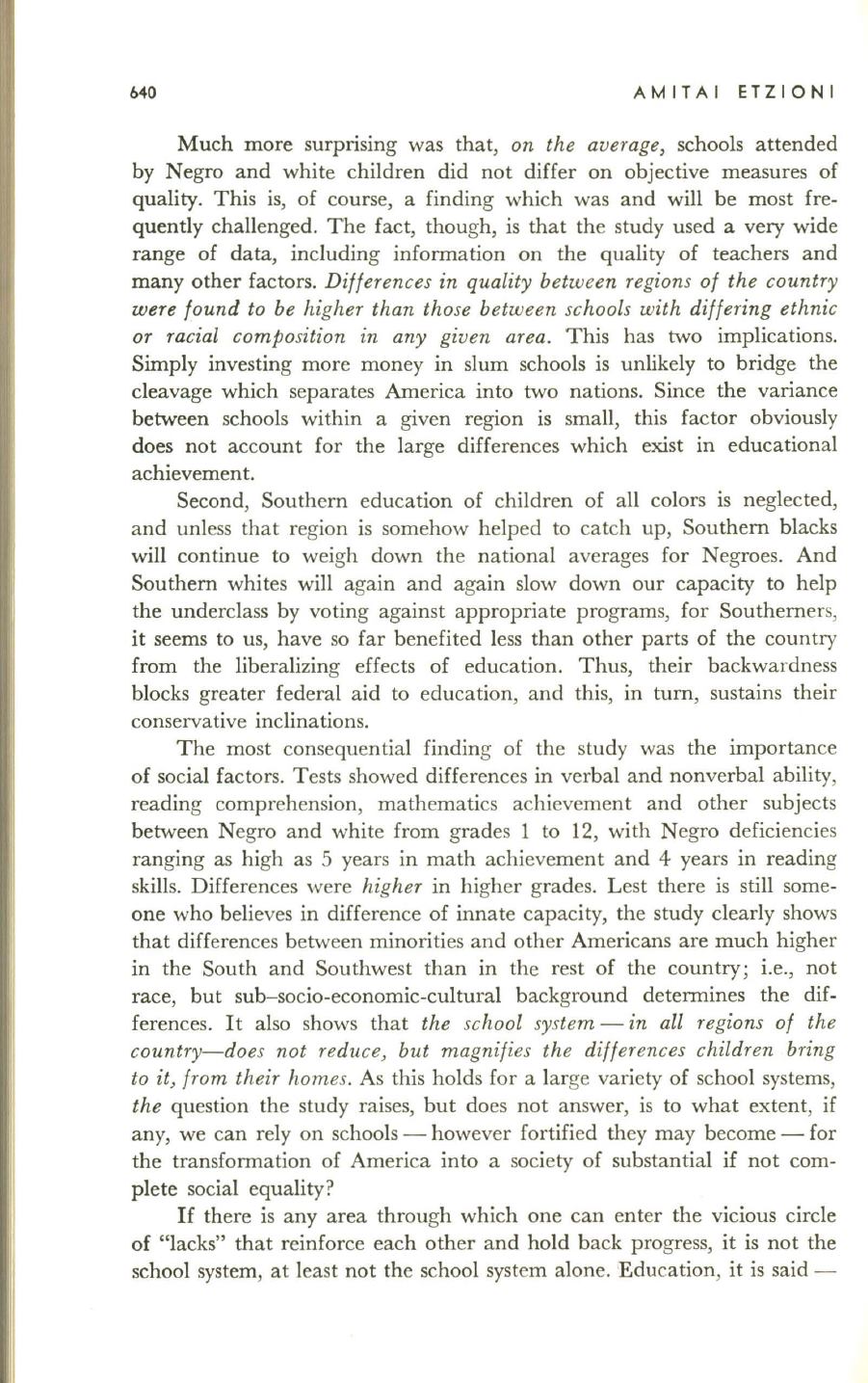
640
AMITAI ETZIONI
Much more surpnsmg was that,
on the average,
schools attended
by Negro and white children did not differ on objective measures of
quality. This is, of course, a finding which was and will be most fre–
quently challenged. The fact, though, is that the study used a very wide
range of data, including information on the quality of teachers and
many other factors.
Differences in quality between regions of the country
were found to be higher than those between schools with differing ethnic
or racial composition in any given area.
This has two implications.
Simply investing more money in slum schools is unlikely to bridge the
cleavage which separates America into two nations. Since the variance
between schools within a given region is small, this factor obviously
does not account for the large differences which exist in educational
achievement.
Second, Southern education of children of all colors is neglected,
and unless that region is somehow helped to catch up, Southern blacks
will continue to weigh down the national averages for Negroes. And
Southern whites will again and again slow down our capacity to help
the underclass by voting against appropriate programs, for Southerners,
it seems to us, have so far benefited less than other parts of the country
from the liberalizing effects of education. Thus, their backwardness
blocks greater federal aid to education, and this, in turn, sustains their
conservative inclinations.
The most consequential finding of the study was the importance
of social factors. Tests showed differences in verbal and nonverbal ability,
reading comprehension, mathematics achievement and other subjects
between Negro and white from grades 1 to 12, with Negro deficiencies
ranging as high as 5 years in math achievement and 4 years in reading
skills. Differences were
higher
in higher grades. Lest there is still some–
one who believes in difference of innate capacity, the study clearly shows
that differences between minorities and other Americans are much higher
in the South and Southwest than in the rest of the country; i.e., not
race, but sub-socio-economic-cultural background determines the dif–
ferences.
It
also shows that
the school system
-
in all regions of the
country-does not reduce, but magnifies the differences children bring
to it, from their homes.
As this holds for a large variety of school systems,
the
question the study raises, but does not answer, is to what extent, if
any, we can rely on schools - however fortified they may become - for
the transformation of America into a society of substantial if not com–
plete social equality?
If
there is any area through which one can enter the vicious circle
of "lacks" that reinforce each other and hold back progress, it is not the
school system, at least not the school system alone. Education, it is said -


